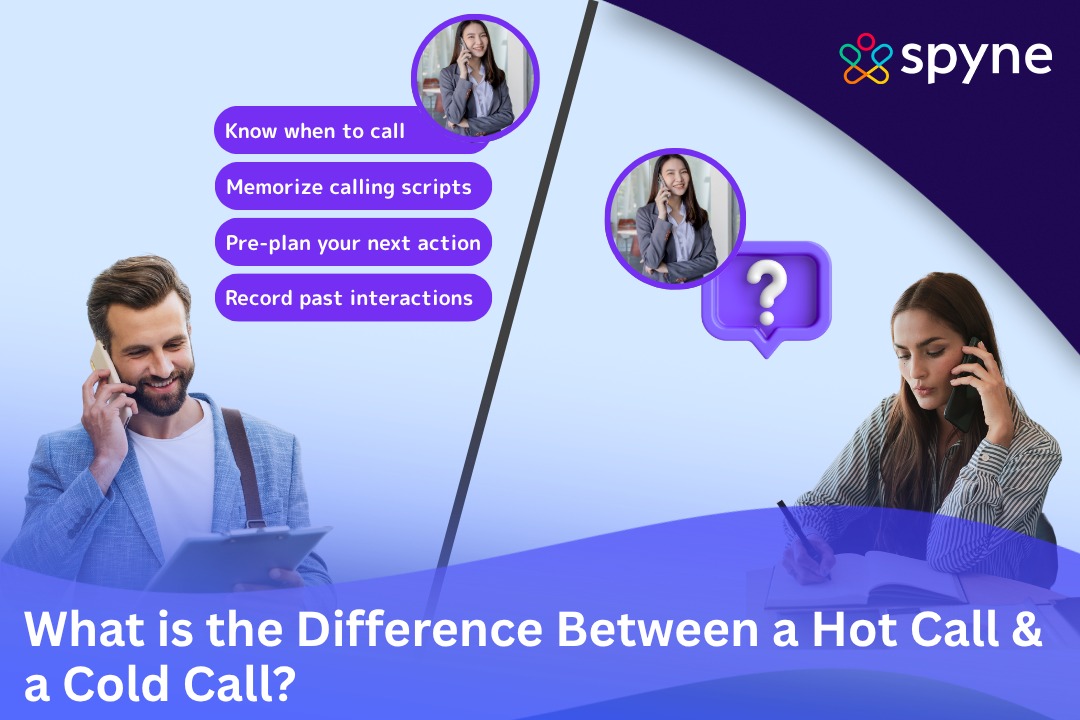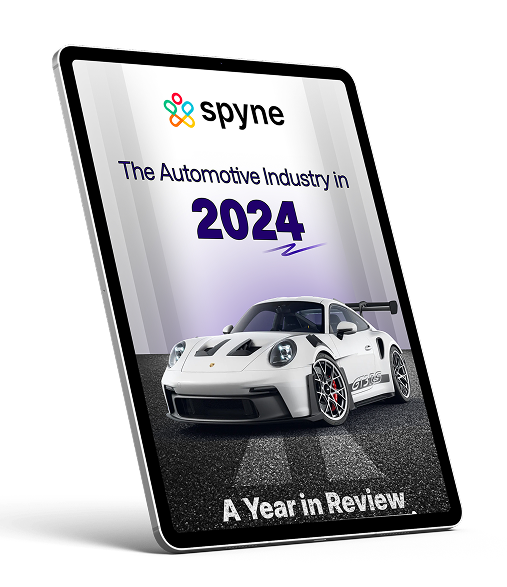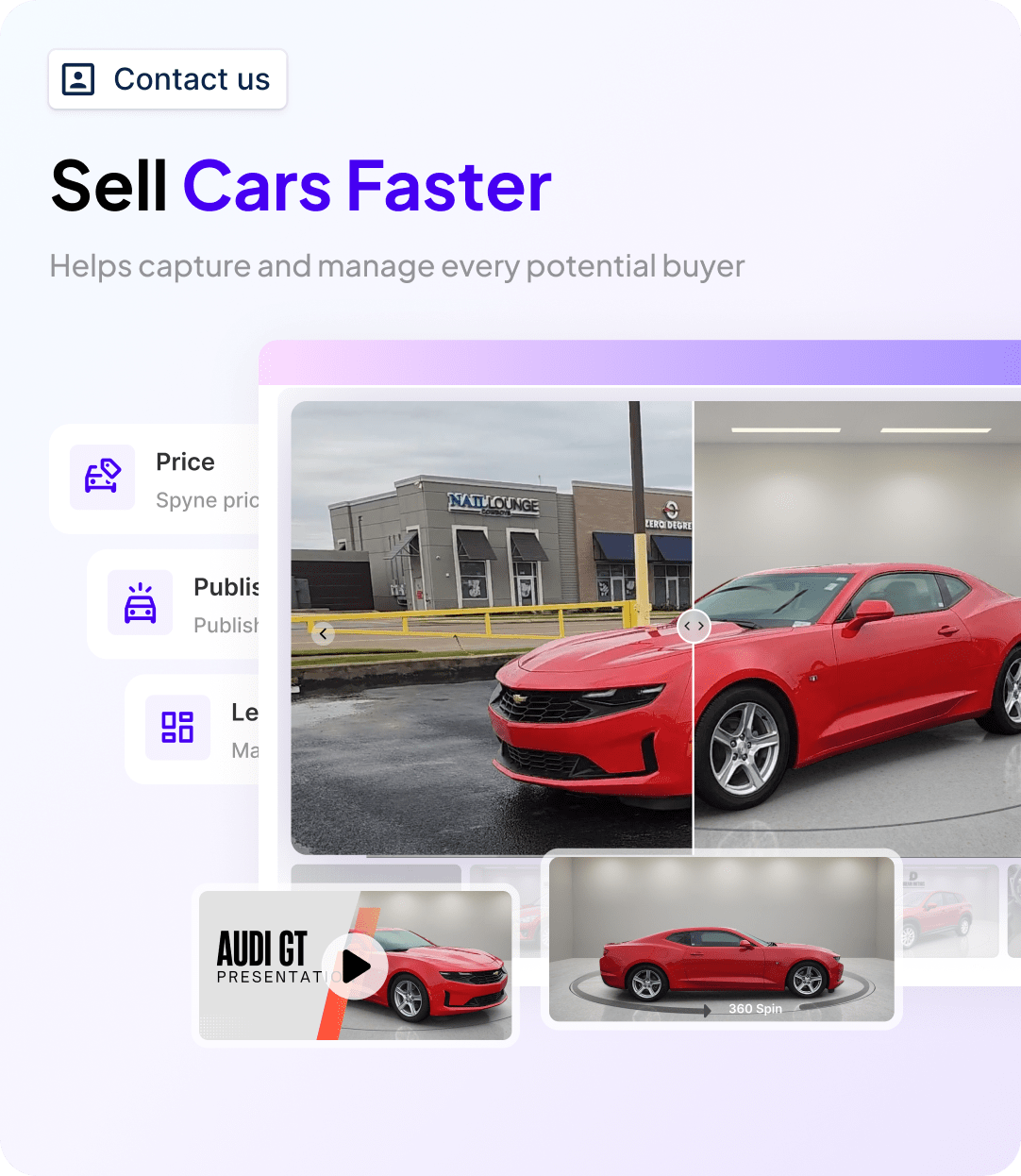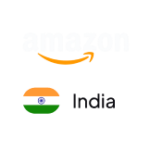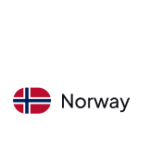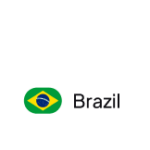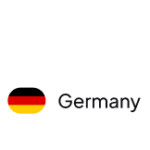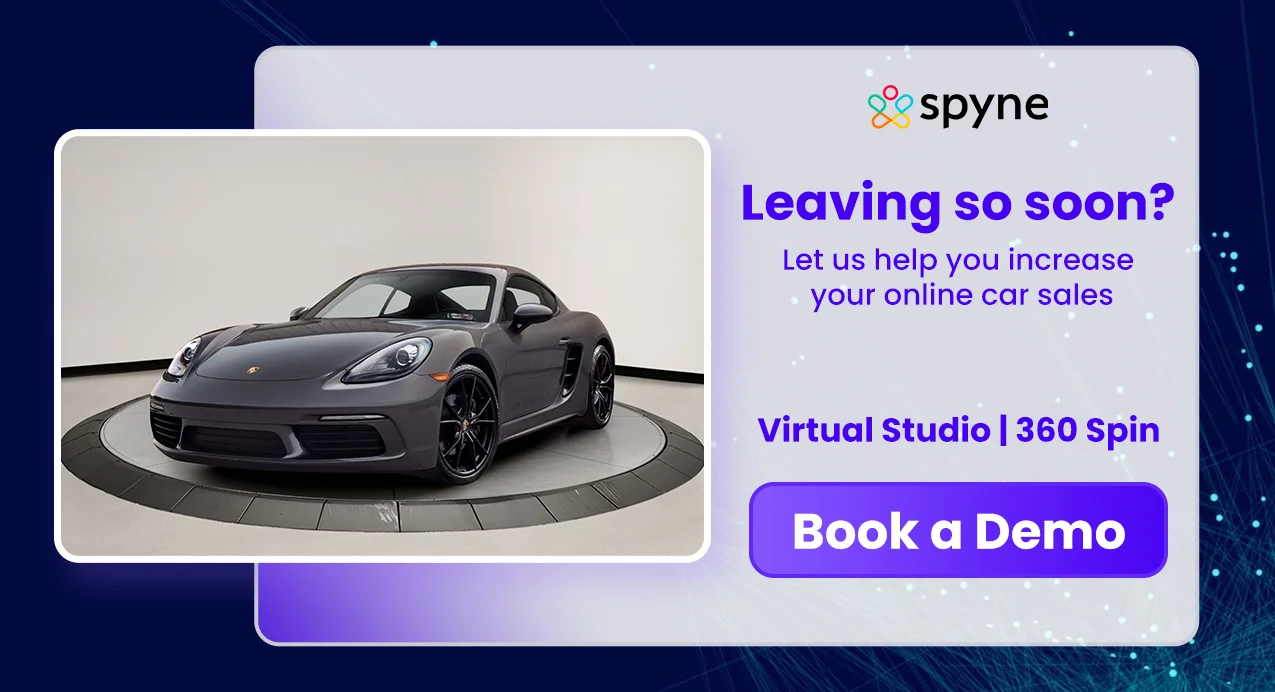What is the difference between a hot call and a cold call? It’s a common question in sales, and understanding the answer can improve your conversions and save your team valuable time. Research shows that only 2% of cold calls result in a meeting, while hot leads are 8x more likely to convert when contacted within the first 5 minutes. Not every sales call is the same. Some prospects don’t know your business at all (cold calls), some have shown interest (warm calls), and others are ready to buy (hot calls). In this blog, we’ll explain what is the difference between a hot call and a cold call?, explore how warm calling fits in, and share smart tips to help you approach each lead type the right way.
What is Cold Calling?
To truly understand what is the difference between a hot call and a cold call?, we first need to define cold calling. Cold calling is a sales technique where a salesperson reaches out to someone who has never interacted with their business before. It’s called “cold” because there’s no prior connection or expressed interest from the person being contacted. These calls are usually made using a list of potential leads and follow a script to guide the conversation. The goal is to introduce a product or service, get the prospect’s attention, and hopefully start a relationship that leads to a sale.
In most cases, cold calls are done over the phone, but they can also happen face-to-face. The person receiving the call didn’t ask for it, and they may not know anything about the company. That’s why cold calling is often seen as one of the harder sales methods; it relies on catching someone’s interest in just a few seconds. However, businesses still use cold calling to reach new customers, especially when other marketing methods fail to generate enough leads.
Even though it’s one of the oldest sales tactics, cold calling is still relevant. With the right approach and preparation, cold calls can help businesses build new connections and find potential customers who may eventually be interested in their product or service. Tools like call tracking also help teams measure which calls lead to conversions and refine their strategies over time.
What is Warm Calling?
Before we go deeper into what is the difference between a hot call and a cold call?, It’s important to know what warm calling means. Warm calling is when a salesperson contacts someone who has already shown some interest in their company, product, or service. The person may have visited your website, filled out a form, liked a social media post, replied to an email, or spoken to someone from your company before. Because there’s some connection already, the call doesn’t feel fully unexpected; it feels “warm.”
Warm calling works better than cold calling because the lead already knows something about your business. They might have requested a callback, interacted with your marketing content, or even attended one of your events. That small engagement makes a big difference. It shows they are at least slightly interested, which gives you a better chance of having a real conversation.
Like cold calling, warm calling also benefits from some preparation. Before making the call, salespeople often check past interactions, like if the person opened a newsletter, replied to a survey, or signed up for updates. This helps them personalize the call and make it more useful for the lead.
Warm calling can happen over the phone, through email, voicemail, or even in person. It feels more natural because the salesperson is not a complete stranger to the customer. That’s why warm calling often leads to better results; it’s simply easier to talk to someone who already knows your name.
9 Tips to Engage with Warm Leads
When discussing what is the difference between a hot call and a cold call?, It’s important to treat warm leads differently. These people already know your brand. You’ve made the first move; now it’s about building trust and offering value. Use the tips below to get better results from your warm calling efforts:
1. Start with a reference to past interaction
Mention how they know your brand, maybe they filled out a form, joined a webinar, or replied to a cold or warm call earlier.
2. Personalize your pitch
Use what you know about the person. Their job title, recent activity, or pain points can help you shape your message. Tools that support AI cold calling can even recommend talking points based on this data, making cold and warm calling more effective.
3. Ask open-ended questions
Instead of “yes” or “no” questions, ask things like “What challenge are you facing right now?” This works in both cold call vs warm call situations and helps the lead open up.
4. Listen carefully
In both cold calling vs warm calling, active listening is key. Let them speak, understand their problems, and then show how you can help.
5. Share useful and relevant content
Email them a case study or blog post. Leads who are comparing services will appreciate helpful resources, which also builds trust in warm call vs cold call conversations.
6. Use multiple touchpoints
Don’t just rely on one phone call. Follow up using email, LinkedIn, or even a message through your car dealer live chat tool. This blend of outreach works well for both hot calls vs cold calls.
7. Respect their timeline
Don’t call too often or too soon. If they ask for more time, give it. Being patient often leads to better results in warm leads vs cold calls situations.
8. Show value quickly
Whether it’s a hot call or a warm call, don’t waste time. Mention how your product solves their problem within the first minute of the conversation.
9. Have a clear next step
Always end the call by telling them what to expect, like booking a demo or sending more info. It’s an important part of any warm calling process.
What is Hot Calling?
When exploring what is the difference between a hot call and a cold call?, It’s clear that hot calling sits at the top of the sales ladder. A hot call is when a salesperson reaches out to someone who has already shown strong interest in the product or service. These people are not only familiar with your business, they’re expecting your call.
For example, a hot call might happen after someone fills out a form on your website, requests a callback, or asks to speak during an event. It can also happen when a person has interacted multiple times with your marketing, like visiting your pricing page, downloading a brochure, or responding to your ad.
What makes it “hot” is the timing and intent. The lead is actively looking for a solution, and your product is likely on their list. This means hot calls often lead to quicker and more successful conversions compared to cold calls or warm calls.
Unlike cold calling, where the lead doesn’t know you, or warm calling, where the lead has shown some interest, hot calling is about striking while the iron is hot. The lead is engaged, curious, and often ready to buy.
Because the interest is already high, hot calling requires a more focused and personalized approach. These calls are your best chance to close the deal, so it’s important to respond quickly, use smart call diversion if needed, and offer clear next steps.
Tips to Engage with Hot Calling
When we look at what is the difference between a hot call and a cold call?, It’s clear that hot calling gives you a big advantage. But that doesn’t mean you can take it lightly. These leads are ready, but your approach still matters. Here are some simple tips to get the most out of your hot calls:
1. Research before the call
Even if the lead is interested, you must still do your homework. Learn about their business, role, and needs before calling.
2. Open with value
Mention how they interacted with you, like filling out a form or booking a demo. Start strong and keep their attention from the first line. If your team uses tools like an AI phone call solution, you can follow up with leads instantly based on their online behavior.
3. Be friendly and human
Don’t jump straight into the sales pitch. Build a small connection. It makes the call feel like a real conversation, not a sales script.
4. Ask open-ended questions
Use questions like “What are you looking to solve right now?” or “How can we help you today?” These keep the lead engaged.
5. Listen more, talk less
Let the lead explain their pain points. This helps you tailor your pitch and makes your offer feel more relevant.
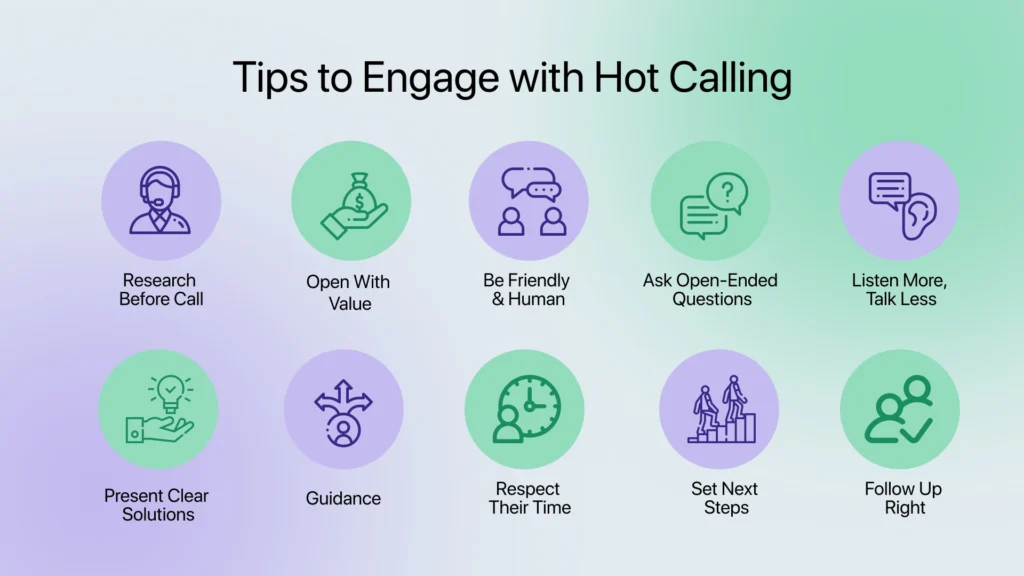
6. Show exactly how you solve their problem
Hot calling works best when you clearly link their needs to your solution. Talk benefits, not just features.
7. Be a guide, not a pushy seller
Focus on solving problems, not just closing deals. If the lead isn’t a good fit, be honest.
8. Respect their time
Keep it short and to the point. If needed, ask if it’s the right time and offer to call back. You can also rely on an AI phone answering service to handle follow-ups when your team is unavailable.
9. Have a clear next step
Always conclude with a concrete action, such as sending a quote, booking a product demo, or scheduling a follow-up.
10. Follow up the right way
To stay on top of engaged prospects, using a smart lead follow-up system can help ensure timely callbacks, automate reminders, and improve your chances of closing the deal.
Warm Calls vs Cold Calls vs Hot Calls: Key Differences Explained
To fully understand what is the difference between a hot call and a cold call?, it helps to compare cold calls, warm calls, and hot calls side by side. The biggest difference between them is how familiar the prospect is with your business and how much they’ve already engaged with you. Let’s break them down:
1. Cold Calls
- Definition: You call someone who has never interacted with your company before.
- Familiarity: The person doesn’t know your brand or expect your call.
- Goal: Introduce yourself, explain your product or service, and try to spark interest.
- Challenge: These calls often face objections, since there’s no trust or awareness yet.
- Example: Calling someone from a purchased contact list or a public database.
- Use case: Good for reaching new markets and generating fresh leads fast.
2. Warm Calls
- Definition: You call someone who has interacted with your brand before.
- Familiarity: The person knows about your business, maybe from social media, an email, or a previous call.
- Goal: Build on existing interest and move the lead forward.
- Advantage: Since they’ve heard of you, warm leads are more open to conversation.
- Example: Calling a lead who downloaded a brochure or signed up for a webinar.
- Use case: Works well when nurturing leads or re-engaging interested contacts.
3. Hot Calls
- Definition: You call someone who is actively interested and likely ready to buy.
- Familiarity: The person has already shown strong buying intent.
- Goal: Close the deal or schedule a final demo or discussion.
- Advantage: These calls have the highest success rate because the lead wants to hear from you.
- Example: Calling someone who requested a demo, pricing info, or a callback.
- Use case: Perfect when leads are sales-ready and looking to act fast.
Which One is Better?
It depends on your goals. Hot and warm calling usually brings higher conversions, but they take more time and planning. On the other hand, Cold calling helps you reach new customers quickly, even though the success rate may be lower. If you’re wondering how to get leads for car sales, cold outreach is still one of the fastest ways to build that initial connection.
Smart businesses use a mix of all three. Cold vs warm calling gives you the reach. Warm vs hot calling gives you the conversion. Together, they keep your sales pipeline full and balanced. Whether it’s cold calling vs hot calling, or warm call vs cold call, knowing when and how to use each method can boost your results and help your sales team succeed in the long run.
How Spyne Can Help With Cold, Warm & Hot Calling
When dealerships want to scale outreach without losing the personal touch, Spyne retail AI is the partner that makes every call count. Whether you’re working on cold call vs warm call outreach, or chasing a red-hot lead ready to convert, Spyne equips your sales team with the tools to close smarter and faster. Here’s how:
1. Understand What is the Difference Between a Hot Call and a Cold Call?
Spyne automatically classifies each lead based on behavior cold, warm, or hot so your team knows who to call, when to call, and how to approach them. Whether you’re using an in-house sales team or an automotive call centre service, this insight helps ensure smarter, faster outreach. This simplifies the difference between cold call and warm call strategies and helps your BDC team shift focus from random dialing to targeted calling.
2. Capture & Convert Hot Calls in Real-Time
Hot calls vs cold calls are all about timing. Spyne sends instant alerts when someone fills out a form, requests a callback, or visits your pricing page so your team can call hot leads while they’re still engaged. No delays, no missed opportunities.
3. Smarter Cold and Warm Calling With AI
Cold calling, meaning in sales, often involves unpredictability. Spyne removes that uncertainty by tracking every touchpoint, emails, chats, site visits, and feeding that data into your CRM. This context turns a typical cold caller’s pitch into a warm conversation that converts.
4. Personalize Every Warm Call, Cold Call, or Follow-Up
Spyne’s automotive CRM shows each lead’s activity history, helping your team tailor every pitch. Whether it’s a cold call that needs a soft intro or a warm call that just needs the right CTA, your reps are always prepared.
5. Automate Cold vs Warm Calling Campaigns
Spyne helps you manage multi-touch campaigns across all lead stages. Whether you’re using an in-house team or exploring call center outsourcing, you can schedule cold calling, warm calling, email follow-ups, and even retargeting all from one platform. This approach boosts warm leads vs cold calls conversions while keeping cold leads from falling through the cracks.
6. Conversational AI That Keeps Leads Warm
Worried about losing leads between touchpoints? Spyne’s conversational AI follow-up system keeps cold and warm leads engaged through chat, SMS, and email ensuring cold calling means more than just a one-time effort.
7. Seamless Calling with VoIP for Automotive Dealerships
Spyne integrates smoothly with VoIP for automotive dealerships, allowing your team to make high-quality calls directly from the CRM. This setup boosts call efficiency and ensures you’re always connected with the right lead, whether it’s a cold, warm, or hot call.
8. Bridge the Gap in Cold Calling vs Hot Calling
What is the difference between a hot call and a cold call? Spyne helps you bridge that gap. From low-intent outreach to high-intent buying signals, Spyne nurtures every lead until they’re ready to talk and then equips your reps to seal the deal.
9. Data-Driven Insights for Every Call Type
Track conversion rates across warm calling, cold calling, and hot calling strategies. Learn which touchpoints work best, what content drives engagement, and how to improve your outreach game. It’s all in the dashboard.
Conclusion
Now that you know what is the difference between a hot call and a cold call? You can improve your sales strategy by using the right approach at the right time. Whether it’s cold calling, warm calling, or making that perfect hot call, knowing how to handle each lead matters. Spyne helps you track, manage, and follow up with cold, warm, and hot leads using smart tools like AI call tracking and follow-up automation. Ready to boost your conversions and close more deals? Book a Free Demo and see how Spyne can help!

